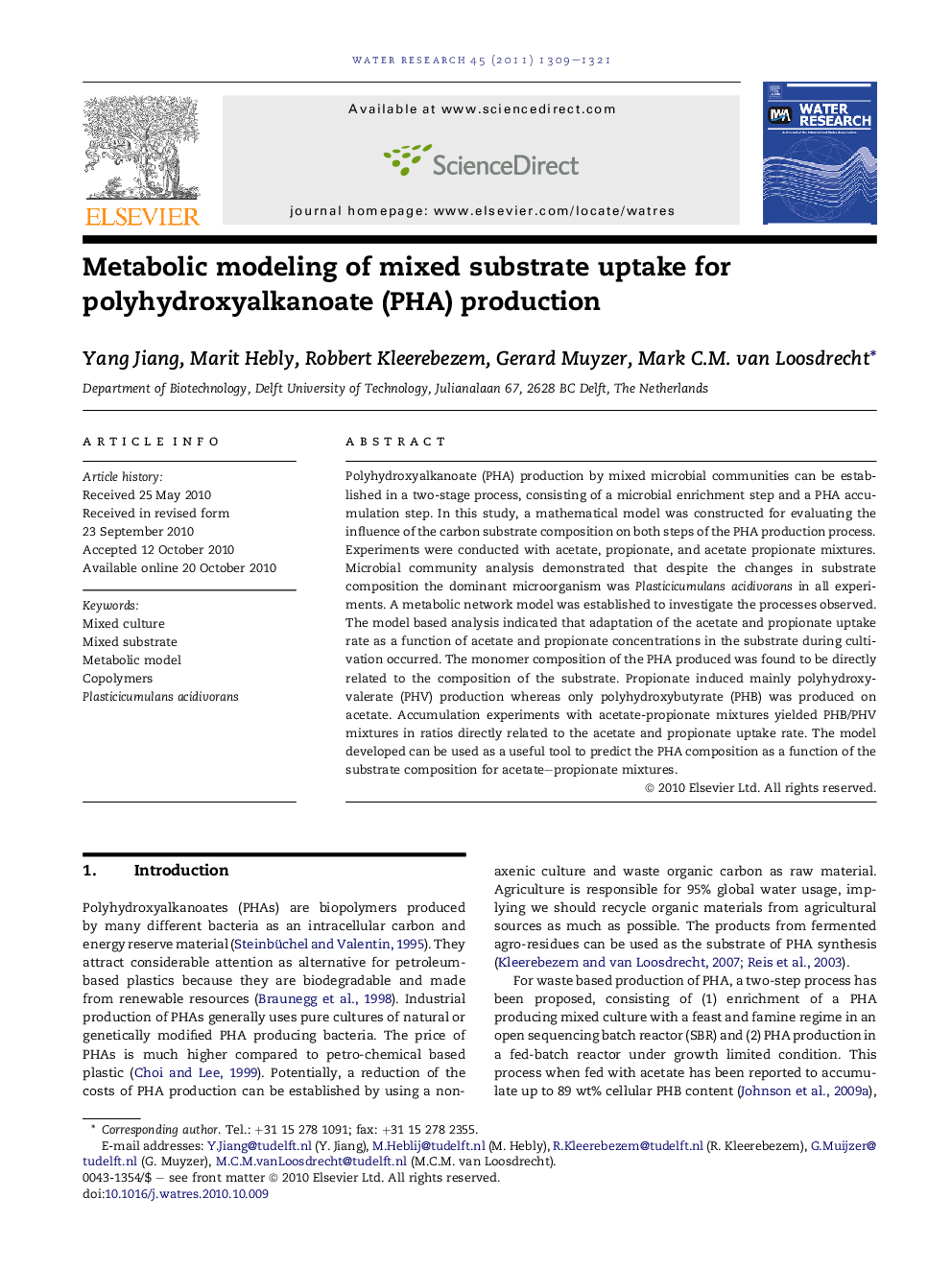| Article ID | Journal | Published Year | Pages | File Type |
|---|---|---|---|---|
| 6368104 | Water Research | 2011 | 13 Pages |
Abstract
Polyhydroxyalkanoate (PHA) production by mixed microbial communities can be established in a two-stage process, consisting of a microbial enrichment step and a PHA accumulation step. In this study, a mathematical model was constructed for evaluating the influence of the carbon substrate composition on both steps of the PHA production process. Experiments were conducted with acetate, propionate, and acetate propionate mixtures. Microbial community analysis demonstrated that despite the changes in substrate composition the dominant microorganism was Plasticicumulans acidivorans in all experiments. A metabolic network model was established to investigate the processes observed. The model based analysis indicated that adaptation of the acetate and propionate uptake rate as a function of acetate and propionate concentrations in the substrate during cultivation occurred. The monomer composition of the PHA produced was found to be directly related to the composition of the substrate. Propionate induced mainly polyhydroxyvalerate (PHV) production whereas only polyhydroxybutyrate (PHB) was produced on acetate. Accumulation experiments with acetate-propionate mixtures yielded PHB/PHV mixtures in ratios directly related to the acetate and propionate uptake rate. The model developed can be used as a useful tool to predict the PHA composition as a function of the substrate composition for acetate-propionate mixtures.
Related Topics
Physical Sciences and Engineering
Earth and Planetary Sciences
Earth-Surface Processes
Authors
Yang Jiang, Marit Hebly, Robbert Kleerebezem, Gerard Muyzer, Mark C.M. van Loosdrecht,
